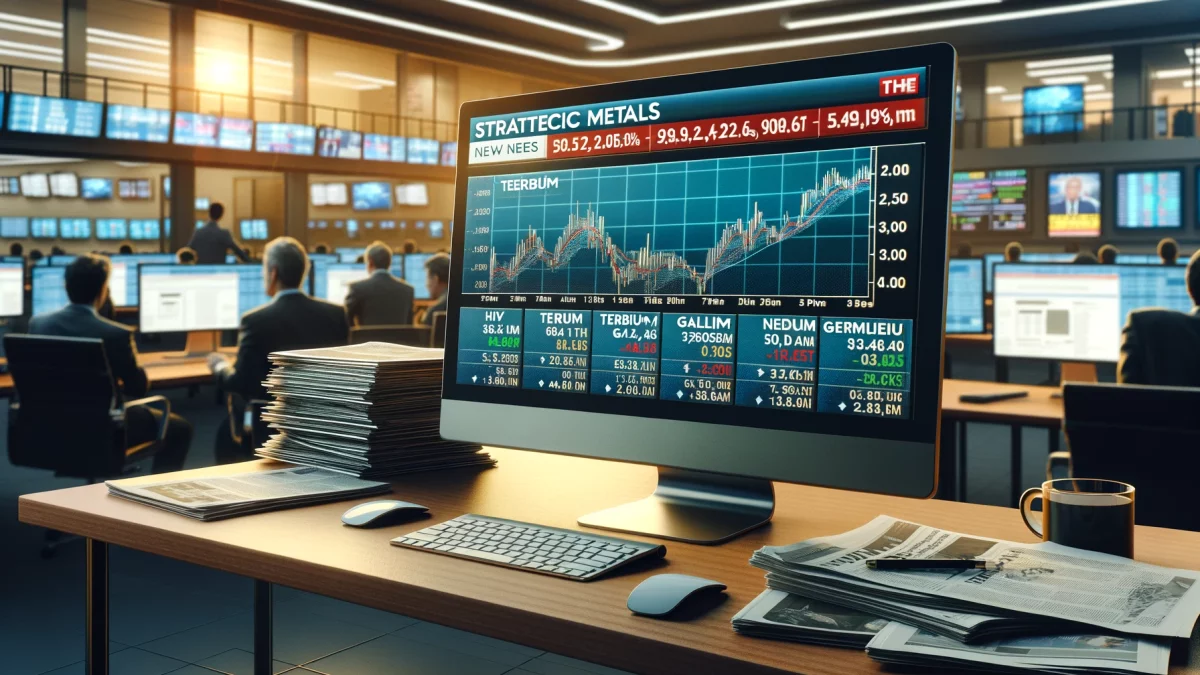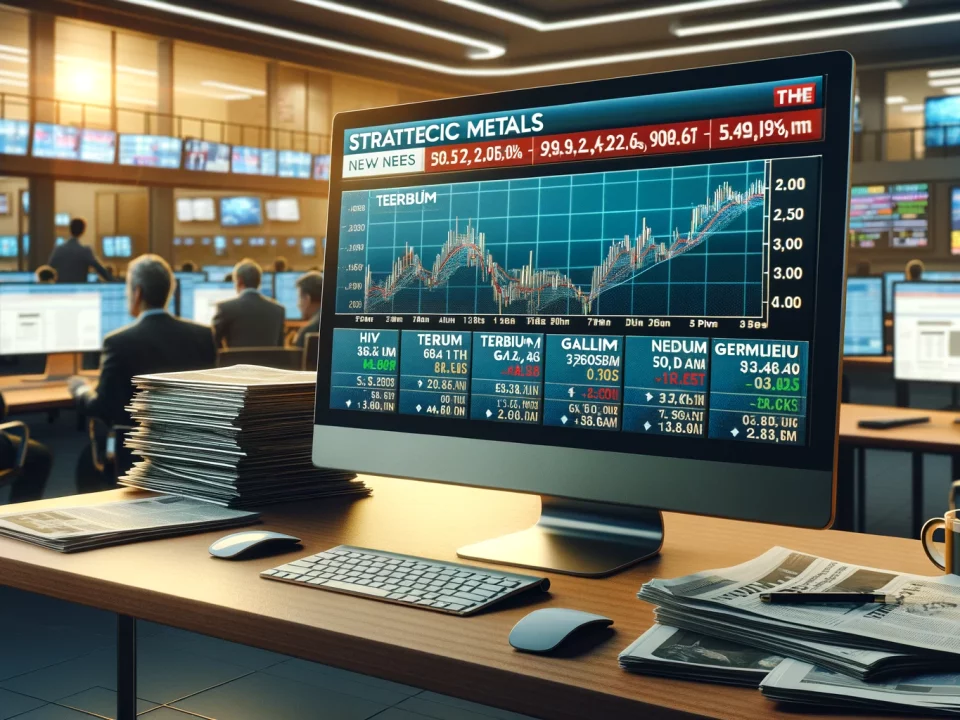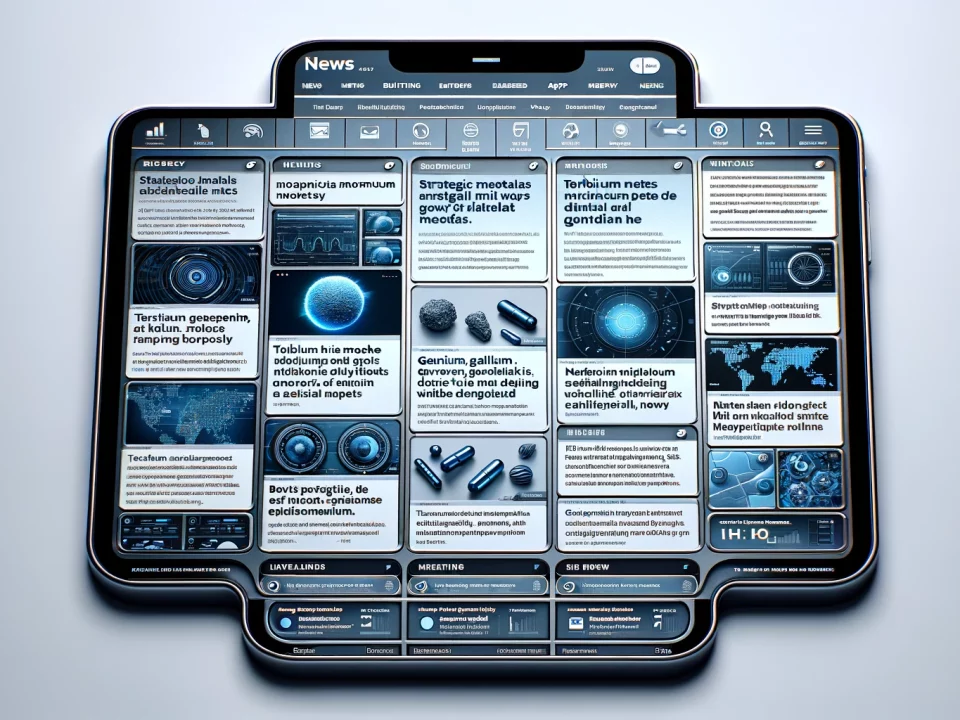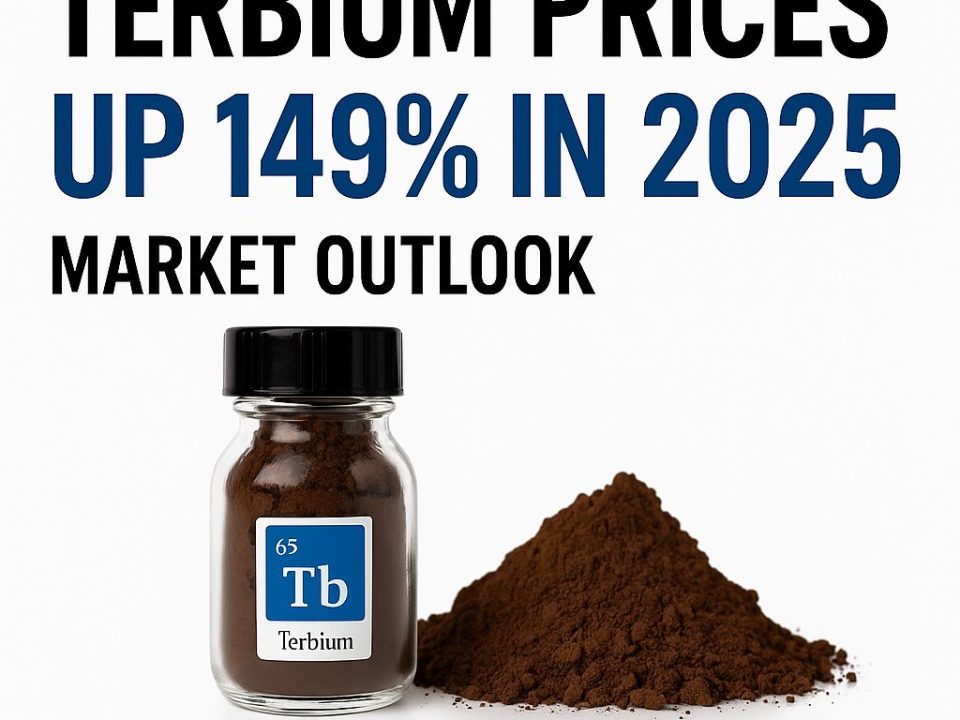
Weekly News Review February 3 – February 9 2025
February 9, 2025
Strategic Stockpiling – A Key Priority for 2025
February 20, 2025The Middle Kingdom was relatively quiet in the raw materials sector, partly due to the aftermath of China’s Lunar New Year celebrations. However, beyond China, efforts to strengthen supply chains continued across Australia, India, South Korea, the United Kingdom, and the United States.
TRUMP SEEKS RARE EARTH DEAL WITH UKRAINE:
At a press conference in the Oval Office, the U.S. President floated raw materials access as a condition for further support.
U.S. President Donald Trump has indicated he wants Ukraine to grant the U.S. access to its rare earth resources as a condition for continued support in its war against Russia.
At a press conference on Monday, Trump asserted that the U.S. has provided Ukraine with more military and economic aid than its European allies and emphasized the need to rebalance this disparity.
He pointed to Ukraine’s “valuable rare earth” resources as a key asset in potential negotiations, suggesting that the East European government would be willing to make a deal with the U.S.
Ukrainian Resources Becoming Increasingly Relevant:
A source close to Zelenskyy told the Financial Times that Trump’s remarks “appear to align with the ‘victory plan’ presented to him in the fall.”
The source added that Ukraine had offered Trump “special terms” for cooperation on critical resources, emphasizing the importance of safeguarding them from Russia and Iran.
Ukraine’s natural resources are increasingly central in discussions about the war with Russia.
According to an analysis by the German Bundestag, Ukraine hosts numerous deposits of critical minerals, including titanium, lithium, and rare earths. The latter are located mainly on the so-called Ukrainian Shiel or Ukrainian Crystalline Massif, which stretches from the country’s southwest to the northwest.
Some of these deposits risk becoming lost to Russia’s advancing forces.
Even if the U.S. secures Ukraine’s rare earth materials, refining remains challenging, as China dominates the supply chain.
For instance, the only active U.S. rare earth mine, Mountain Pass, still ships its output to China due to limited domestic refining capacity. Its operator, MP Materials, is constructing a processing facility in Texas.
CHINA: RENEWABLE ENERGY IS ROARING –
Renewable energy is booming in China: In 2023, the country installed as many solar panels as the world did the previous year. This has been made possible by its own manufacturing capacities and access to essential raw materials, from aluminum to rare earths, as well as government subsidies. These subsidies include guaranteed prices for electricity from renewable sources fed into the grid.
However, this may soon change. According to a statement from the National Development and Reform Commission and the National Energy Commission, it is time to transition to market-based pricing. This shift is expected to drive “sustainable, high-quality growth,” according to the state news agency Xinhua. Experts believe these measures could boost technological progress and reduce energy production costs.
In addition to solar, wind, and hydropower, China also relies on fossil fuels and, along with India, accounts for most global investments in coal power. The country is also a global leader in nuclear energy expansion.
AUSTRALIA: GAMECHANGER FOR STRATEGIC METALS –
The Australian government announced Monday that its Future Made in Australia (Production Tax Credit and Other Measures) Bill 2024 has passed the Senate, paving the way for a combined $8.6 billion (AUS$ 13.7 billion) in tax breaks to flow into domestic production of renewable hydrogen and critical minerals processing and refinement.
The bill is a central component of the overarching Future Made in Australia initiative, which Prime Minister Anthony Albanese unveiled last April (we reported). In detail, the legislation contains two provisions: a hydrogen production credit, which provides companies with $1.26 (AUS$2) per kilogram produced, and a critical mineral production credit, which provides ten percent of processing and refining costs for Australia’s 31 crucial minerals.
With these incentives, the Australian government seeks to accelerate the growth of the country’s emerging domestic downstream critical minerals sector. Historically, companies in this sector have often relied on overseas processing for their raw materials.
In a social media post, Resource Minister Madeleine King described the bill as a “game changer for Australia’s emerging critical minerals industry, especially in Western Australia and Queensland.”
THE US AND INDIA STRENGTHEN PARTNERSHIP:
Trump and Modi announced an initiative to recover lithium, rare earths, and more—including from fossil industry sectors.
India and the U.S. aim to deepen economic ties and enhance collaboration in strategic sectors such as defense, semiconductors, artificial intelligence, and energy security. To advance these goals, Indian Prime Minister Narendra Modi and U.S. President Donald Trump launched the “U.S.-India COMPACT (Catalyzing Opportunities for Military Partnership, Accelerated Commerce & Technology) for the 21st Century” initiative during their meeting in Washington.
One key objective is to double bilateral trade to over $500 billion by 2030, supported by plans for a new trade agreement. In energy security, their joint statement underscores the importance of fossil fuel reserves, including oil, gas, and nuclear energy, while also highlighting the role of critical minerals essential for the green energy transition and emerging technologies. To secure supply chains, both nations plan to collaborate on research and invest across all value chain stages.
Modi and Trump also announced the Strategic Mineral Recovery Initiative, which aims to recover and refine key minerals such as lithium, cobalt, and rare earth elements. This effort will tap into sources like aluminum production, coal mining, and the oil and gas industry.
U.S.-India COMPACT marks the latest step in a series of agreements strengthening bilateral ties. Under Trump’s predecessor, Joe Biden, the two nations had already expanded cooperation on critical and emerging technologies (we reported). Raw materials have also been a key topic between the two nations.
The resource partnership is also a strategic move to counter China’s influence in the Indo-Pacific, as both countries seek to reduce dependence on Chinese imports and boost domestic production. For India, an emerging industrial powerhouse, the initiative aligns with its ambition to position itself as a key competitor to China’s economic dominance.
SOUTH KOREA AND THE UK SIGN MOU FOR RARE EARTH MAGNETS:
Ionic Rare Earths Limited (UK)has signed a non-binding Memorandum of Understanding (MOU) with DNA Link, a South Korean company developing a rare earth manufacturing plant in Yasan, which is set to begin production later this year. Under the partnership, both parties will collaborate on securing offtake agreements for magnet swarf and recycled rare earth oxides generated during magnet production. The partnership aims to bolster the rare earth supply chains outside China, potentially involving the South Korean Government and international stakeholders in the Future.
From South Korea to the UK and Back:
The initiative aligns with Ionic’s global expansion strategy: its subsidiary, Ionic Technologies, is developing a rare earth recycling facility in Belfast, set to commence operations in 2026. In March 2024, the company launched full-scale production in a demonstration plant (we reported). Material from DNA Link’s South Korean operations could be recycled at the plant in the Future, where it would be refined into new feedstock for the South Korean magnet maker.
The Third-Largest Export Destination of Chinese Rare Earth Magnets:
South Korea is a major importer of rare earth magnets, with demand coming primarily from its semiconductor and automotive industries and domestic energy transition efforts. However, it lacks domestic critical minerals and processing capacity, relying heavily on Chinese imports. For example, in 2024, it was China’s third-largest rare earth magnet export destination, importing 5,811 tons, according to Chinese Customs data. To reduce dependence, the country is seeking to diversify its supply chains. DNA Link’s facility is set to produce 1,000 tons of neodymium-iron-boron (NdFeB) magnets annually, offsetting some Chinese material.






